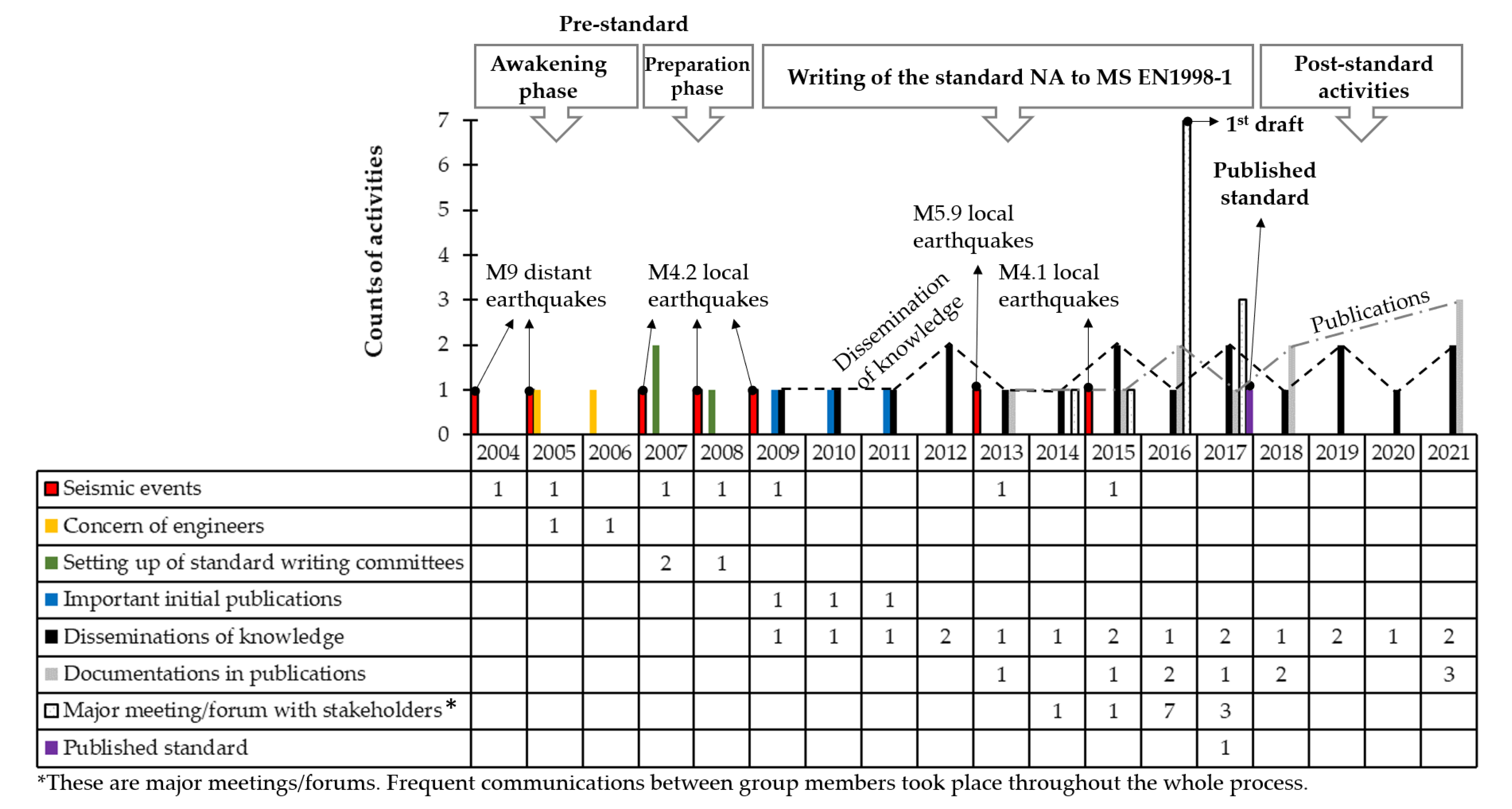Developing Earthquake-Resistant Structural Design Standard for Malaysia Based on Eurocode 8: Challenges and Recommendations
Abstract
:1. Introduction
1.1. Pre-Standard: The Awakening and Preparation Phases (2004–2009)
1.2. The Standard-Writing Phase (2009–2017)
1.3. Post-Standard Phase (2017 to Current)
2. Technical Challenges Faced during the Drafting of the Standard
2.1. Challenge 1: The Uncontrolled Use of Probabilistic Seismic Hazard Assessment (PSHA) Methodology
2.2. Challenge 2: The Incomplete EC8 Site Classification Scheme
2.3. Challenge 3: EC8 Mandated the Use of DCM Ductile Detailing for Higher Seismic Hazard Level
2.4. Challenge 4: EC8 Imposes Modelling of Irregular Buildings for Dynamic Analysis
3. Future Outlook of the Second Generation of EC8 and Beyond
- The number of NDPs is reduced by harmonisation, and this requires international consensus among the European member states.
- The second generation of EC8 aims to improve its clarity by simplifying clauses and removing rules with limited practical utilities (i.e., overly “academic” provisions). For instance, the dependence on ductility classes to the level of seismicity is under review. The conditions of low-to-moderate seismicity areas require special considerations [38]; the number of ductility classes is consolidated from three to two [36,38]; the use of two spectral shapes Type 1 and Type 2 is to be abandoned [38]; the soil classification scheme and the associated site-factor models are to be revised [22,23,24]; methods of analysis for handling irregularities in buildings are also under review [38].
- Research findings to fill the voids of knowledge and include introducing new methodologies for handling post-tensioned buildings, flat slab buildings and high-strength concrete.
- Allow changes to evolve gradually. Engineers who have been trained to operate with the existing version of EC8 should not have much difficulty adapting to the new version. On a separate note, earthquake engineering is a fast-evolving discipline (e.g., the use of conditional mean spectrum [49] and risk-targeted hazard spectra [50] with the considerations of community resilience [51]). Hence, the EAEE has set up a working group entitled ‘Future direction for EC8’ to oversee the long-term development of EC8 through establishing broad guiding principles that are in alignment with the latest development and to gradually phase out outdated practices which are founded on technologies developed as far back as the 1990s or earlier [52].
4. Conclusions
- There was a lack of control in applying the PSHA methodology to areas with a paucity of representative and reliable seismic data. To address this situation, imposing a minimum level of seismic hazard was recommended.
- Areas typified by limited ductile building construction can be susceptible to soil-structure resonance, and more so on deep soil sites [31]. A conventional site factor model, such as that stipulated in EC8, would not cater for resonance conditions as described. An alternative site classification scheme in which the site natural period is an explicit modelling parameter was introduced.
- The regulatory approach of mandating DCM ductile detailing requirements following the level of seismic hazard of the area (as shown on the seismic hazard maps) is an outdated practice. The viable option of using strength to trade off for ductility was recommended. In addition, a simplified set of code-compliant DCM designs for RC columns and walls has been developed by the authors to circumvent the need to apply the complex design procedures as stipulated by EC8.
- Amid the proliferation of commercial structural analysis software, EC8 mandates the use of dynamic analysis in the design of the majority of buildings. Dynamic analysis necessitates engineering skills and experiences that are scarce among engineers in Malaysia and other low-to-moderate seismicity regions. GFM methodology was introduced by the authors to exercise control of the use of commercial software avoiding the “black box” syndrome.
Author Contributions
Funding
Institutional Review Board Statement
Informed Consent Statement
Acknowledgments
Conflicts of Interest
Appendix A
| No. | Events | Location | Year | Remarks |
|---|---|---|---|---|
| 1 | Sumatran subduction M9 earthquake | Acheh, Indonesia | 2004 | Seismic event (1) |
| 2 | Sumatran subduction M8.6 earthquake | Nias, Indonesia | 2005 | Seismic event (2) |
| 3 | IEM Civil and Structural Technical Division’s position documents | Kuala Lumpur | 2005–2006 | Concern of engineers in Malaysia |
| 4 | Sumatran subduction M8.4 earthquake | Bengkulu, Indonesia | 2007 | Seismic event (3) |
| 5 | IEM appointed by Department of Standards Malaysia to be the Standards Writing Organisation (SWO) for NA to EC8. | Kuala Lumpur | 2007 | Initiation of standard writing |
| 6 | IEM set up a Technical Committee (TC) on Earthquakes and established Working Group 1 (WG1) | Kuala Lumpur | 2008 | Setting up TC and WG for standard writing |
| 7 | Local M4.2 seismic activities detected | Bukit Tinggi, Selangor | 2007–2009 | Seismic event (4) |
| 8 | A journal paper “Seismic load estimates of distant subduction earthquakes affecting Singapore” in Engineering Structures [6] | - | 2009 | Important publication (1) |
| 9 | Two-Day Course on Earthquake Resistant Design and Analysis of Buildings and Structures | Kuala Lumpur | 2009 | Dissemination of knowledge (1) |
| 10 | A journal paper “Ground-motion attenuation relationship for the Sumatran megathrust earthquakes” in Earthquake Engineering and Structural Dynamics [7] | - | 2010 | Important publication (2) |
| 11 | Symposium on Earthquake Ground Motions and Responses of RC Buildings | Kuala Lumpur | 2010 | Dissemination of knowledge (2) |
| 12 | Two-Day Course on Analysis and Design to EC8 Demystified | Kuala Lumpur | 2011 | Dissemination of knowledge (3) |
| 13 | An article “An Approach for Seismic Design in Malaysia following the Principles of Eurocode 8” in the IEM JURUTERA Monthly Bulletin [8] | - | 2011 | Important publication (3) |
| 14 | Sequel to Two-Day Course on Analysis and Design to EC8 Demystified | Kuala Lumpur | 2012 | Dissemination of knowledge (4) |
| 15 | Two-Day Symposium and Workshop on Earthquake Engineering in Malaysia and Asia Pacific Region | Kuala Lumpur | 2012 | Dissemination of knowledge (5) |
| 16 | Local M4.1 seismic activities detected | Temenggor Lake, Perak | 2013 | Seismic event (5) |
| 17 | An article “Recommended Earthquake Loading Model for Peninsular Malaysia” in the IEM JURUTERA Monthly Bulletin [53] | Kuala Lumpur | 2013 | Documentation in publication (1) |
| 18 | Two-Day Symposium and Workshop on Earthquake Engineering in Malaysia and Asia Pacific Region | Kuala Lumpur | 2013 | Dissemination of knowledge (6) |
| 19 | Two-Day Workshop on Recommended Earthquake Loading Model in the Proposed NA to EC8 for Sabah, Sarawak and Updated Model for Peninsular Malaysia | Kuala Lumpur | 2014 | Dissemination of knowledge (7) |
| 20 | IEM meeting and Standard writing workshop | Kuala Lumpur | 2014 | Major meeting/forum with stakeholders (1) * |
| 21 | Two-Day International Seminar and Workshop on Presentation and Reviewing of the Draft Malaysia NA to EC8 | Kuala Lumpur | 2015 | Dissemination of knowledge (8) |
| 22 | IEM meeting and Standard writing workshop | Kuala Lumpur | 2015 | Major meeting/forum with stakeholders (2) * |
| 23 | Two-Day Course on How to Utilise Our Proposed EC8 Malaysia NA to Our Practising Consulting Engineers | Kuala Lumpur | 2015 | Dissemination of knowledge (9) |
| 24 | Special issue “Developing Malaysian Design Standards for Earthquake Resistance” in IEM JURUTERA Monthly Bulletin [54] | - | 2015 | Documentation in publication (2) |
| 25 | Local M5.9 earthquake | Ranau, Sabah | 2015 | Seismic event (6) |
| 26 | Kota Kinabalu, Sabah Town Council, mandated seismic design with PGA of 0.12 g | Kota Kinabalu, Sabah | 2015 | Interim enforcement of seismic design |
| 27 | Special issue “Public Safety in Earthquake Event” in IEM JURUTERA Monthly Bulletin [55] | - | 2016 | Documentation in publication (3) |
| 28 | IEM Standard meeting to go through the public comments | Kuala Lumpur | 2016 | Major meeting/forum with stakeholders (3) * |
| 29 | A journal paper “Minimum loading requirements for areas of low seismicity” in Earthquakes and Structures [19] | - | 2016 | Documentation in publication (4) |
| 30 | Dialogue on The Proposed NA to MS EC8 on Design of Structure for Earthquake Resistance | Kota Kinabalu, Sabah | 2016 | Major meeting/forum with stakeholders (4) * |
| 31 | Special meeting with Sabah seismologist/geologist | Kota Kinabalu, Sabah | 2016 | Major meeting/forum with stakeholders (5) * |
| 32 | Draft Malaysian EC8 NA for public comments [9] | Kuala Lumpur | 2016 | Major meeting/forum with stakeholders (6) * |
| 33 | WG1 meeting with Department of Standards Malaysia (DSM) | Shah Alam, Selangor | 2016 | Major meeting/forum with stakeholders (7) * |
| 34 | National Consultation of the Draft Malaysian EC8 NA by DSM | Shah Alam, Selangor | 2016 | Major meeting/forum with stakeholders (8) * |
| 35 | Seminar on Analysis of Torsional Actions in Buildings | Kuala Lumpur | 2016 | Dissemination of knowledge (10) |
| 36 | WG1 study group meeting with Minister of Science, Technology and Information | Kota Kinabalu, Sabah | 2016 | Major meeting/forum with stakeholders (9) * |
| 37 | A journal paper “A design spectrum model for flexible soil sites in regions of low-to-moderate seismicity” in Soil Dynamics and Earthquake Engineering [31] | - | 2017 | Documentation in publication (5) |
| 38 | Special four seismic experts meeting | Kuala Lumpur | 2017 | Major meeting/forum with stakeholders (10) * |
| 39 | Two-Day Workshop on Proposed Seismic Analysis Methods for Regions of Low to Medium Seismicity | Kuala Lumpur | 2017 | Dissemination of knowledge (11) |
| 40 | A conference paper “Intricacies of addressing distant and local earthquakes in Malaysia in the official design standard EC8 Malaysia NA” at AEES 2017 [56] | Australia | 2017 | Documentation in publication (6) |
| 41 | Finalised Malaysian EC8 NA for public comments | Kuala Lumpur | 2017 | Major meeting/forum with stakeholders (11) * |
| 42 | Publication of MS NA EN 1998-1: 2015 (2017) [2] | - | 2017 | Published standard |
| 43 | Public forum on Malaysia NA to EC8 by DSM | Shah Alam, Selangor | 2017 | Major meeting/forum with stakeholders (12) * |
| 44 | A journal paper “Seismic Hazard and Response Spectrum Modelling for Malaysia and Singapore” in Earthquakes and Structures [20] | - | 2018 | Documentation in publication (7) |
| 45 | Two book chapters in Guideline on Design of Buildings and Structures in Low-to-moderate Seismicity Countries [46,47] | Hong Kong | 2018 | Documentation in publication (8) |
| 46 | Two-Day Symposium on Earthquake Resistant Design of RC Buildings based on the EC8 Malaysia NA: From Loading Characterisation to RC Detailing | Kuala Lumpur | 2018 | Dissemination of knowledge (12) |
| 47 | Two-Day Symposium on Earthquake Resistant Design of RC Buildings based on the EC8 Malaysia NA: From Loading Characterisation to RC Detailing | Kuching, Sarawak | 2019 | Dissemination of knowledge (13) |
| 48 | A conference paper “The Malaysian Seismic Design Code: Lessons learnt” at NZSEE 2019 Pacific Conference on Earthquake Engineering (PCEE) [3] | Auckland, New Zealand | 2019 | Dissemination of knowledge (14) |
| 49 | Launching of www.QuakeAdvice.org website (last assessed on 28 October 2021) [10] | - | 2020 | Dissemination of knowledge (15) |
| 50 | One-Day webinar on Online Tools for Earthquake Resistant Design of RC Buildings based on the EC8 Malaysia NA | Malaysia, Australia | 2021 | Dissemination of knowledge (16) |
| 51 | A journal paper “Fast Checking of Drift Demand in Multi-Storey Buildings with Asymmetry” in Buildings [45] | - | 2021 | Documentation in publication (9) |
| 52 | A journal paper “Site-Specific Response Spectra: Guidelines for Engineering Practice” in CivilEng [32] | - | 2021 | Documentation in publication (10) |
| 53 | 4-half day webinar on Analysis and Design of Building Structures for Seismic Environment in Malaysia | Malaysia | 2021 | Dissemination of knowledge (17) |
| 54 | A conference paper “Simplifying Eurocode 8 Ductile Detailing Rules for Reinforced Concrete Structures” at 17th World Conference of Earthquake Engineering [39] | Sendai, Japan | 2021 | Documentation in publication (11) |
References
- MS EN 1998-1:2015. Eurocode 8: Design of Structures for Earthquake Resistance—Part 1: General Rules, Seismic Actions and Rules for Buildings; Department of Standards Malaysia: Selangor, Malaysia, 2015.
- NA-2017 to MS EN 1998-1:2015. Malaysian National Annex to Eurocode 8: Design of Structures for Earthquake Resistance—Part 1: General Rules, Seismic Actions and Rules for Buildings; Department of Standards Malaysia: Selangor, Malaysia, 2017.
- Looi, D.T.W.; Tsang, H.H.; Lam, N.T.K. The Malaysian Seismic Design Code: Lessons learnt. In Proceedings of the 2019 Eleventh Pacific Conference on Earthquake Engineering, Auckland, New Zealand, 4–6 April 2019. [Google Scholar]
- IEM Position Document 2005. Position Paper on Issues Related to Earthquake; The Institution of Engineers Malaysia (IEM): Selangor, Malaysia, 2007.
- Hee, M.C.; Lam, N.T.K.; Tsang, H.H.; Looi, D.T.W.; Zaeem, A.Z.; Lim, E.P. Evolution of IEM Study Group. In Jurutera the Monthly Bulletin of the IEM; The Institution of Engineers Malaysia (IEM): Selangor, Malaysia, 2016; pp. 12–14. [Google Scholar]
- Lam, N.T.K.; Balendra, T.; Wilson, J.L.; Venkatesan, S. Seismic loads estimates of distant subduction earthquakes affecting Singapore. Eng. Struct. 2009, 31, 1230–1240. [Google Scholar] [CrossRef]
- Megawati, K.; Pan, T.C. Ground-motion attenuation relationship for the Sumatran megathrust earthquakes. Earthq. Eng. Struct. Dyn. 2010, 39, 827–845. [Google Scholar] [CrossRef]
- Pappin, J.W.; Yim, P.H.I.; Koo, C.H.R. An approach for seismic design in Malaysia following the principles of Eurocode 8. In Jurutera the Monthly Bulletin of the IEM; The Institution of Engineers Malaysia (IEM): Selangor, Malaysia, 2011; pp. 22–28. [Google Scholar]
- Draft NA-2016 to MS EN 1998-1:2015. Draft Malaysian National Annex to Eurocode 8: Design of Structures for Earthquake Resistance—Part 1: General Rules, Seismic Actions and Rules for Buildings; Department of Standards Malaysia: Selangor, Malaysia, 2016.
- Quakeadvice. Available online: www.quakeadvice.org (accessed on 28 September 2021).
- Dowrick, D. Earthquake Resistant Design and Risk Reduction, 2nd ed.; Wiley: New York, NY, USA, 2009; pp. 45–129. [Google Scholar]
- Mulargia, F.; Stark, P.B.; Geller, R.J. Why is Probabilistic Seismic Hazard Analysis (PSHA) still used? Phys. Earth Planet. Inter. 2017, 264, 63–75. [Google Scholar] [CrossRef]
- Tsang, H.H.; Wenzel, F. Setting structural safety requirement for controlling earthquake mortality risk. Saf. Sci. 2016, 86, 174–183. [Google Scholar] [CrossRef]
- Paulay, T.; Priestly, M.J.N. Seismic Design of Reinforced Concrete and Masonry Buildings; John Wiley & Sons, Inc.: New York, NY, USA, 1992; pp. 1–94, 639–661. [Google Scholar]
- Tsang, H.H. Lessons learnt from the 512 Wenchuan earthquake: Perception of seismic risks. In Proceedings of the Australian Earthquake Engineering Society Conference, Ballarat, Australia, 21–23 November 2008. [Google Scholar]
- Burbridge, D.; Leonard, M.; Allen, T.; Collins, C.; Volti, T. The 2012 National Earthquake Hazard Map of Australia. In Proceedings of the Australian Earthquake Engineering Society 2012 Conference, Queensland, Australia, 7–9 December 2012. [Google Scholar]
- FEMA450. NEHRP Recommended Provisions for Seismic Regulations for New Buildings and other Structures; Building Seismic Safety Council, National Institute of Building Sciences: Washington, DC, USA, 2004. [Google Scholar]
- Fardis, M.N. Seismic Design Assessment and Retrofitting of Concrete Buildings Based on EN-Eurocode 8; Springer: Berlin/Heidelberg, Germany, 2009; pp. 1–46. [Google Scholar]
- Lam, N.T.K.; Tsang, H.H.; Lumantarna, E.; Wilson, J.L. Minimum loading requirements for areas of low seismicity. Earthq. Struct. 2016, 11, 539–561. [Google Scholar] [CrossRef]
- Looi, D.T.W.; Tsang, H.H.; Hee, M.C.; Lam, N.T.K. Seismic Hazard and Response Spectrum Modelling for Malaysia and Singapore. Earthq. Struct. 2018, 15, 67–79. [Google Scholar]
- AS1170. 4-2007 Amd 2:2018 Structural Design Actions, Part 4: Earthquake Actions in Australia; Standards Australia: Sydney, Australia, 2018.
- Pitilakis, K.; Riga, E.; Anastasiadis, A. Design spectra and amplification factors for Eurocode 8. Bull. Earthq. Eng. 2012, 10, 1377–1400. [Google Scholar] [CrossRef]
- Pitilakis, K.; Riga, E.; Anastasiadis, A. New code site classification, amplification factors and normalised response spectra based on a worldwide ground-motion database. Bull. Earthq. Eng. 2013, 11, 925–966. [Google Scholar] [CrossRef]
- Pitilakis, K.; Riga, E.; Anastasiadis, A.; Fotopoulou, S.; Karafagka, S. Towards the revision of EC8: Proposal for an alternative site classification scheme and associated intensity dependent spectral amplification factors. Soil Dyn. Earthq. Eng. 2018, 126, 105137. [Google Scholar] [CrossRef]
- Seed, H.B.; Ugas, C.; Lysmer, J. Site-dependent spectra for earthquake-resistant design. Bull. Seismol. Soc. Am. 1976, 66, 221–243. [Google Scholar] [CrossRef]
- Lam, N.T.K.; Wilson, J.L.; Chandler, A.M. Seismic displacement response spectrum estimated from the frame analogy soil amplification model. Eng. Struct. 2001, 23, 1437–1452. [Google Scholar] [CrossRef]
- Tsang, H.H.; Chandler, A.M.; Lam, N.T.K. Estimating Non-linear Site Response by Single Period Approximation. Earthq. Eng. Struct. Dyn. 2006, 35, 1053–1076. [Google Scholar] [CrossRef]
- Zhu, C.; Pilz, M.; Cotton, F. Which is a better proxy, site period or depth to bedrock, in modelling linear site response in addition to the average shear-wave velocity? Bull. Earthq. Eng. 2020, 18, 797–820. [Google Scholar] [CrossRef]
- Tsang, H.H.; Chandler, A.M.; Lam, N.T.K. Simple Models for Estimating Period-Shift and Damping in Soil. Earthq. Eng. Struct. Dyn. 2006, 35, 1925–1947. [Google Scholar] [CrossRef]
- Tsang, H.H.; Sheikh, M.N.; Lam, N.T.K. Modeling Shear Rigidity of Stratified Bedrock in Site Response Analysis. Soil Dyn. Earthq. Eng. 2012, 34, 89–98. [Google Scholar] [CrossRef]
- Tsang, H.H.; Wilson, J.L.; Lam, N.T.K.; Su, R.K.L. A Design Spectrum Model for Flexible Soil Sites in Regions of Low-to-Moderate Seismicity. Soil Dyn. Earthq. Eng. 2017, 92, 36–45. [Google Scholar] [CrossRef] [Green Version]
- Hu, Y.W.; Lam, N.T.K.; Khatiwada, P.; Menegon, S.J.; Looi, D.T.W. Site-Specific Response Spectra: Guidelines for Engineering Practice. CivilEng 2021, 2, 712–735. [Google Scholar] [CrossRef]
- Wair, B.R.; DeJong, J.T.; Shantz, T. Guidelines for Estimation of Shear Wave Velocity Profiles; PEER Report 2012/08; Pacific Earthquake Engineering Research Center, University of California: Berkeley, CA, USA, 2012. [Google Scholar]
- Looi, D.T.W.; Chiang, J.C.L. Seismic Experts Explain Key Technical Issues in the Draft of National Annex to Eurocode 8. In Jurutera the Monthly Bulletin of the IEM.; The Institution of Engineers Malaysia (IEM): Selangor, Malaysia, 2017; pp. 26–31. [Google Scholar]
- Kottke, A.R.; Rathje, E.M. Technical manual for STRATA; PEER Report No.: 2008/10; Pacific Earthquake Engineering Research Center, University of California: Berkeley, CA, USA, 2008. [Google Scholar]
- Fardis, M. Current Developments and Future Prospects of The European Code for Seismic Design and Rehabilitation of Buildings: Eurocode 8. In Proceedings of the Thirteenth World Conference on Earthquake Engineering, Vancouver, BC, Canada, 1–6 August 2004. [Google Scholar]
- MS EN 1992-1:2010. Eurocode 2: Design of Concrete Structures—Part 1-1: General Rules and Rules for Buildings; Standards Malaysia: Selangor, Malaysia, 2010.
- Bisch, P. Eurocode 8. Evolution or Revolution? In Recent Advances in Earthquake Engineering in Europe. In Proceedings of the Sixteenth European Conference on Earthquake Engineering, Thessaloniki, Greece, 18–21 June 2018; Kyriazis Pitilakis. Springer: Berlin/Heidelberg, Germany, 2018. [Google Scholar]
- Looi, D.T.W.; Tsang, H.H.; Lam, N.T.K. Simplifying Eurocode 8 Ductile Detailing Rules for Reinforced Concrete Structures. In Proceedings of the Seventeenth World Conference on Earthquake Engineering (WCEE2020), Sendai, Japan, 22 September–1 October 2021. [Google Scholar]
- Varsamis, C.D.; Papanikolaou, V.K. Evaluation of current Eurocode 8 provisions on R/C ductile wall design. Structures 2021, 33, 368–377. [Google Scholar] [CrossRef]
- Wilson, J.L.; Wibowo, A.; Lam, N.T.K.; Gad, E.F. Drift Behaviour of Lightly Reinforced Concrete Columns and Structural Walls for Seismic Performance Assessment. Aust. J. Struct. Eng. 2015, 16, 62–74. [Google Scholar] [CrossRef]
- Raza, S.; Tsang, H.H.; Wilson, J.L. Unified models for post-peak failure drifts of normal- and high-strength RC columns. Mag. Concr. Res. 2018, 70, 1081–1101. [Google Scholar] [CrossRef]
- Looi, D.T.W.; Su, R.K.L.; Cheng, B.; Tsang, H.H. Effects of axial load on seismic performance of reinforced concrete walls with short shear span. Eng. Struct. 2017, 151, 312–326. [Google Scholar] [CrossRef]
- Menegon, S.J.; Wilson, J.L.; Lam, N.T.K.; Mcbean, P. RC Walls in Australia: Seismic Design and Detailing to AS 1170. 4 and AS 3600. Aust. J. Struct. Eng. 2017, 19, 67–84. [Google Scholar]
- Khatiwada, P.; Lumantarna, E.; Lam, N.T.K.; Looi, D.T.W. Fast Checking of Drift Demand in Multi-Storey Buildings with Asymmetry. Buildings 2021, 11, 13. [Google Scholar] [CrossRef]
- Lumantarna, E.; Mehdipanah, A.; Lam, N.T.K.; Wilson, J.L. Methods of structural analysis for buildings in regions of low-to-moderate seismicity. In Guideline on Design of Buildings and Structures in Low-to-Moderate Seismicity Countries. Professional Guide: PG-002; Lam, N.T.K., Chan, T.M., Eds.; Chinese National Engineering Research Centre for Steel Construction (Hong Kong branch), The Hong Kong Polytechnic University: Hong Kong, China, 2018; pp. 45–68. [Google Scholar]
- Looi, D.T.W.; Lim, E.P.; Hee, M.C. A case study of code compliant design of buildings in regions of low-to-moderate seismicity. In Guideline on Design of Buildings and Structures in Low-to-Moderate Seismicity Countries. Professional Guide: PG-002; Lam, N.T.K., Chan, T.M., Eds.; Chinese National Engineering Research Centre for Steel Construction (Hong Kong branch), The Hong Kong Polytechnic University: Hong Kong, China, 2018; pp. 99–112. [Google Scholar]
- Booth, E. Future Directions for Eurocode 8. In Proceedings of the Second European Conference on Earthquake Engineering and Seismology, Istanbul, Turkey, 25–29 August 2014. [Google Scholar]
- Baker, J.W. Conditional mean spectrum: Tool for ground-motion selection. J. Struct. Eng. 2011, 137, 322–331. [Google Scholar] [CrossRef]
- Horspool, N.; Gerstenberger, M.C.; Elwood, K.J. Risk Targeted Hazard Spectra for Seismic Design in New Zealand. In Proceedings of the NZSEE 2021 Annual Conference, Christchurch, New Zealand, 14–16 April 2021. [Google Scholar]
- Tsang, H.H.; Daniell, J.E.; Wenzel, F.; Wilson, J.L. A Universal Approach for Evaluating Earthquake Safety Level Based on Societal Fatality Risk. Bull. Earthq. Eng. 2020, 18, 273–296. [Google Scholar] [CrossRef]
- Booth, E. Future Directions for Eurocode 8. In Proceedings of the Seventeenth World Conference on Earthquake Engineering (WCEE2020), Sendai, Japan, 22 September–1 October 2021. [Google Scholar]
- Looi, D.T.W.; Hee, M.C.; Tsang, H.H.; Lam, N.T.K. Recommended earthquake loading model for Peninsular Malaysia. In Jurutera the Monthly Bulletin of the IEM; The Institution of Engineers Malaysia (IEM): Selangor, Malaysia, 2013; pp. 6–20. [Google Scholar]
- Chiang, J.C.L. Special Issue: Developing Malaysian Design Standards for Earthquake Resistance. In Jurutera the Monthly Bulletin of the IEM; The Institution of Engineers Malaysia (IEM): Selangor, Malaysia, 2015. [Google Scholar]
- Chiang, J.C.L. Special Issue: Public Safety in Earthquake Event. In Jurutera the Monthly Bulletin of the IEM; The Institution of Engineers Malaysia (IEM): Selangor, Malaysia, 2016. [Google Scholar]
- Chiang, J.C.L.; Looi, D.T.W.; Hee, M.C. Intricacies of addressing distant and local earthquakes in Malaysia in the official design standard EC8 Malaysia NA. In Proceedings of the Australian Earthquake Engineering Society 2017 Conference, Canberra, Australia, 24–26 November 2017. [Google Scholar]
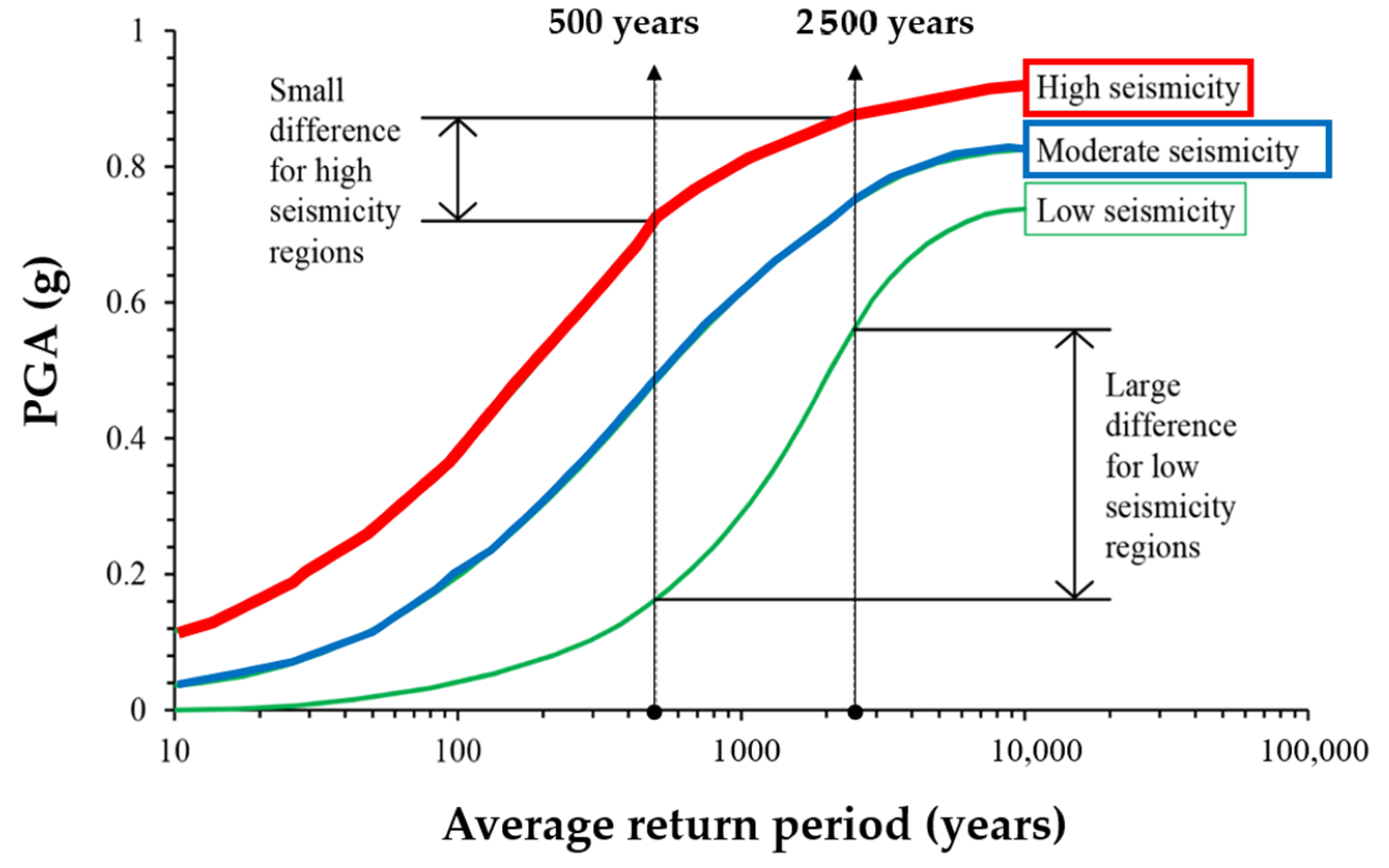
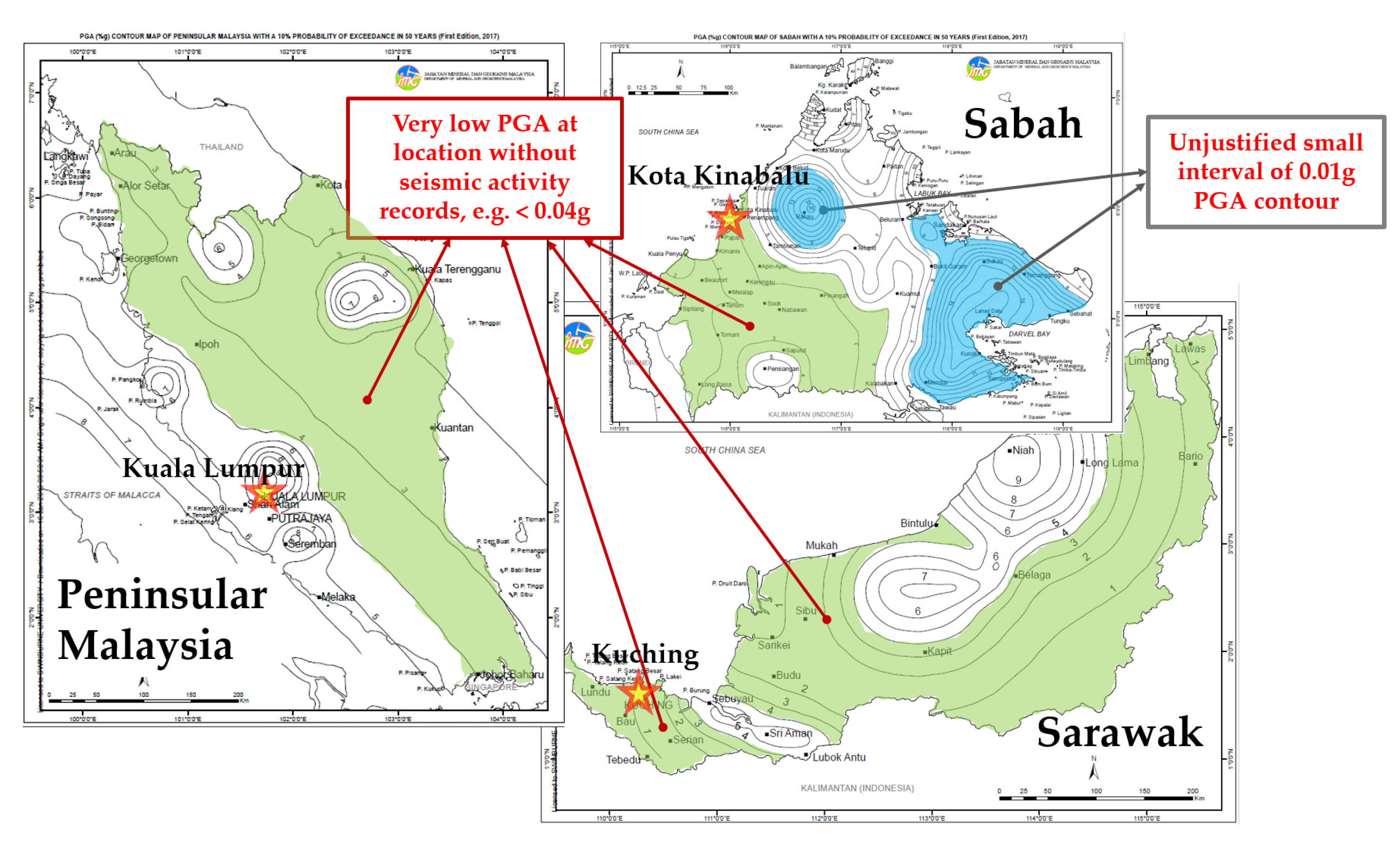
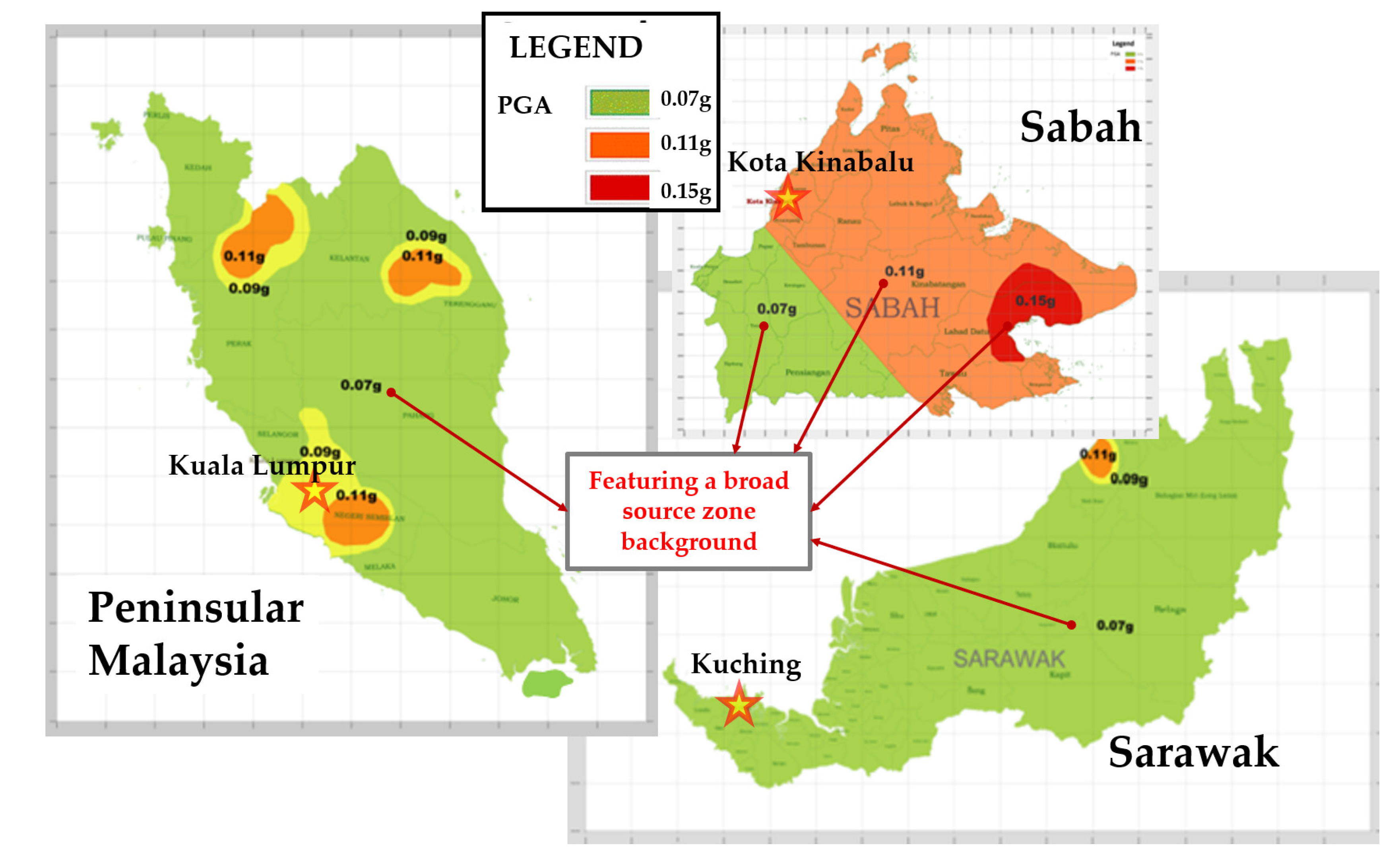
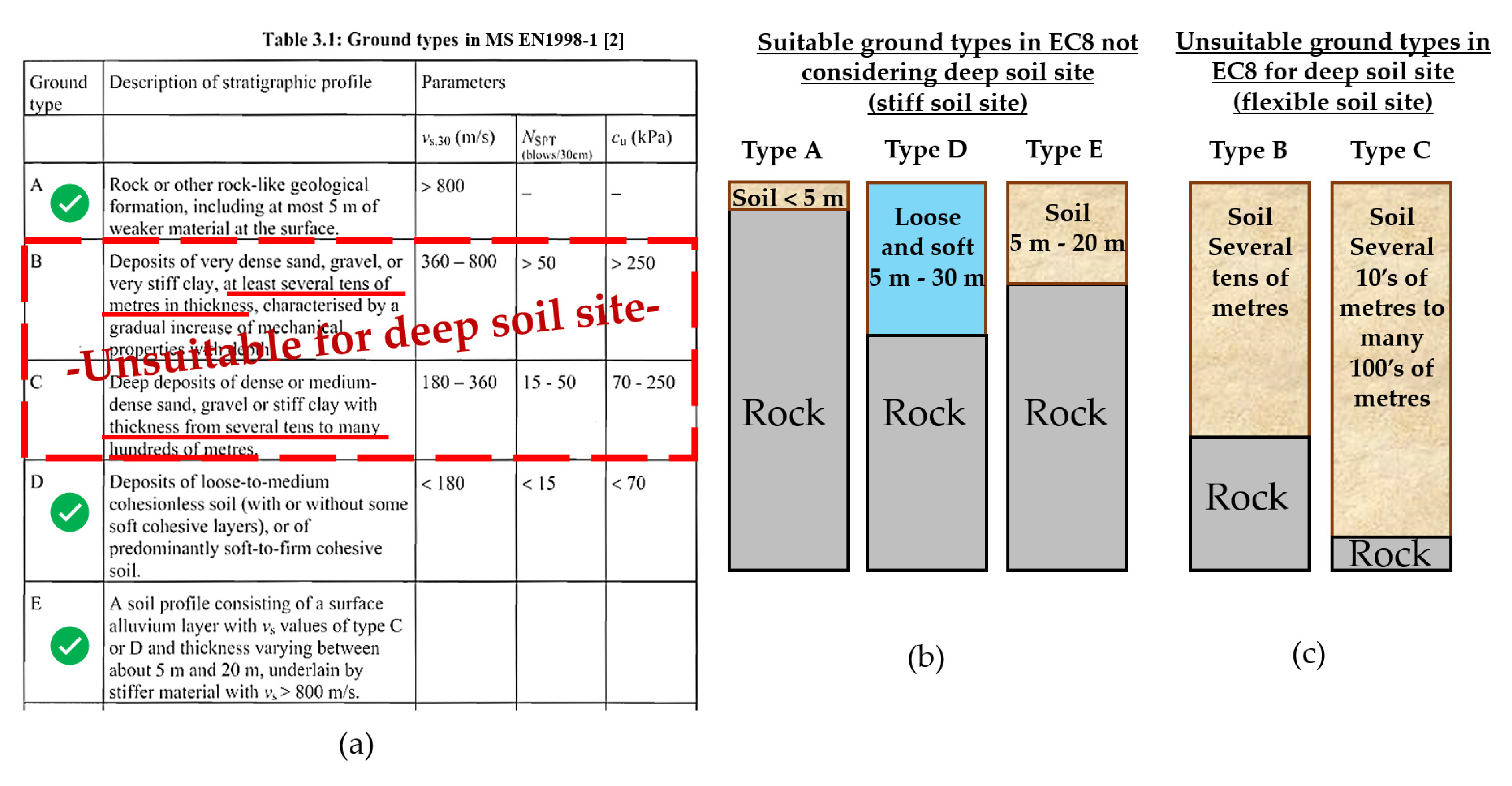
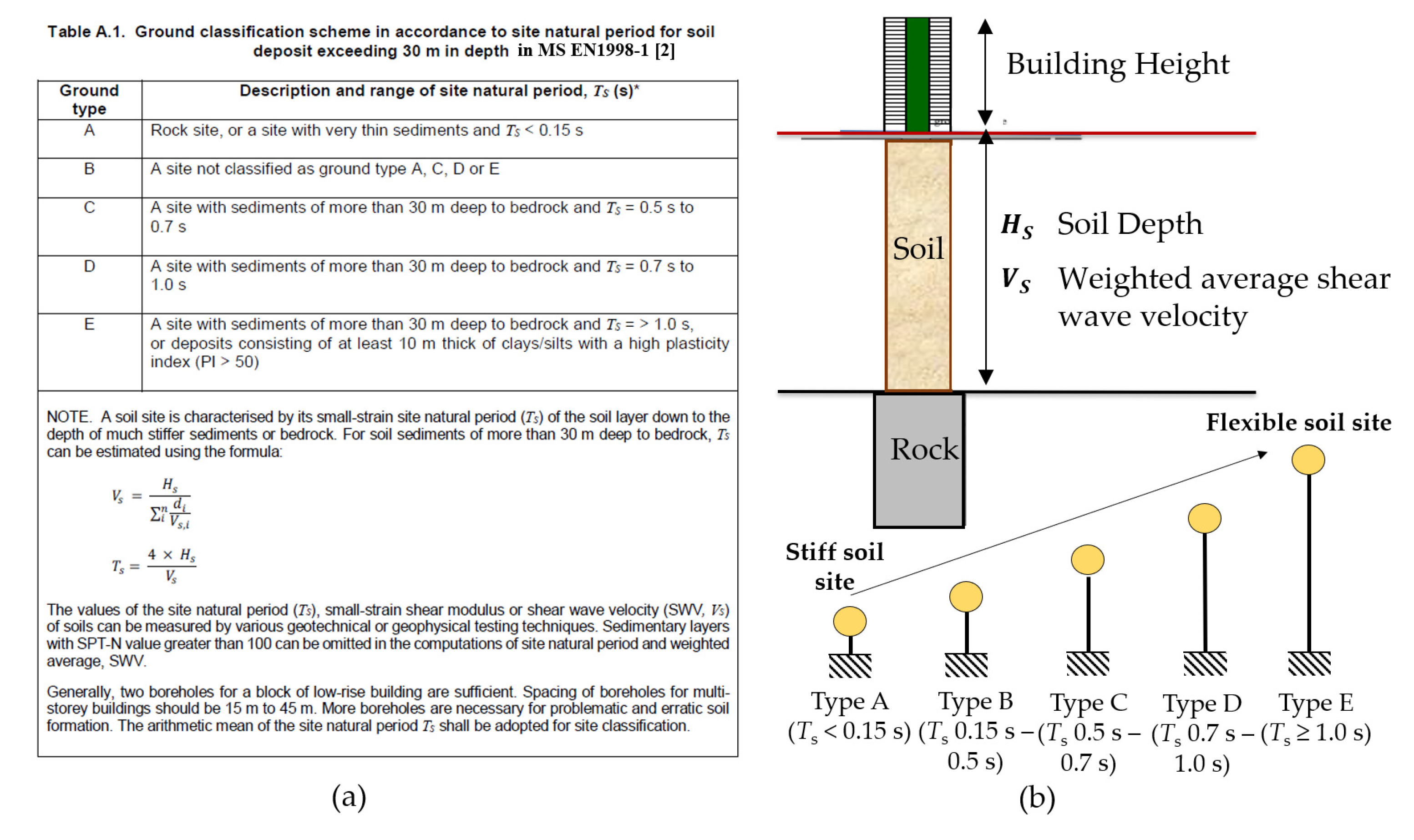
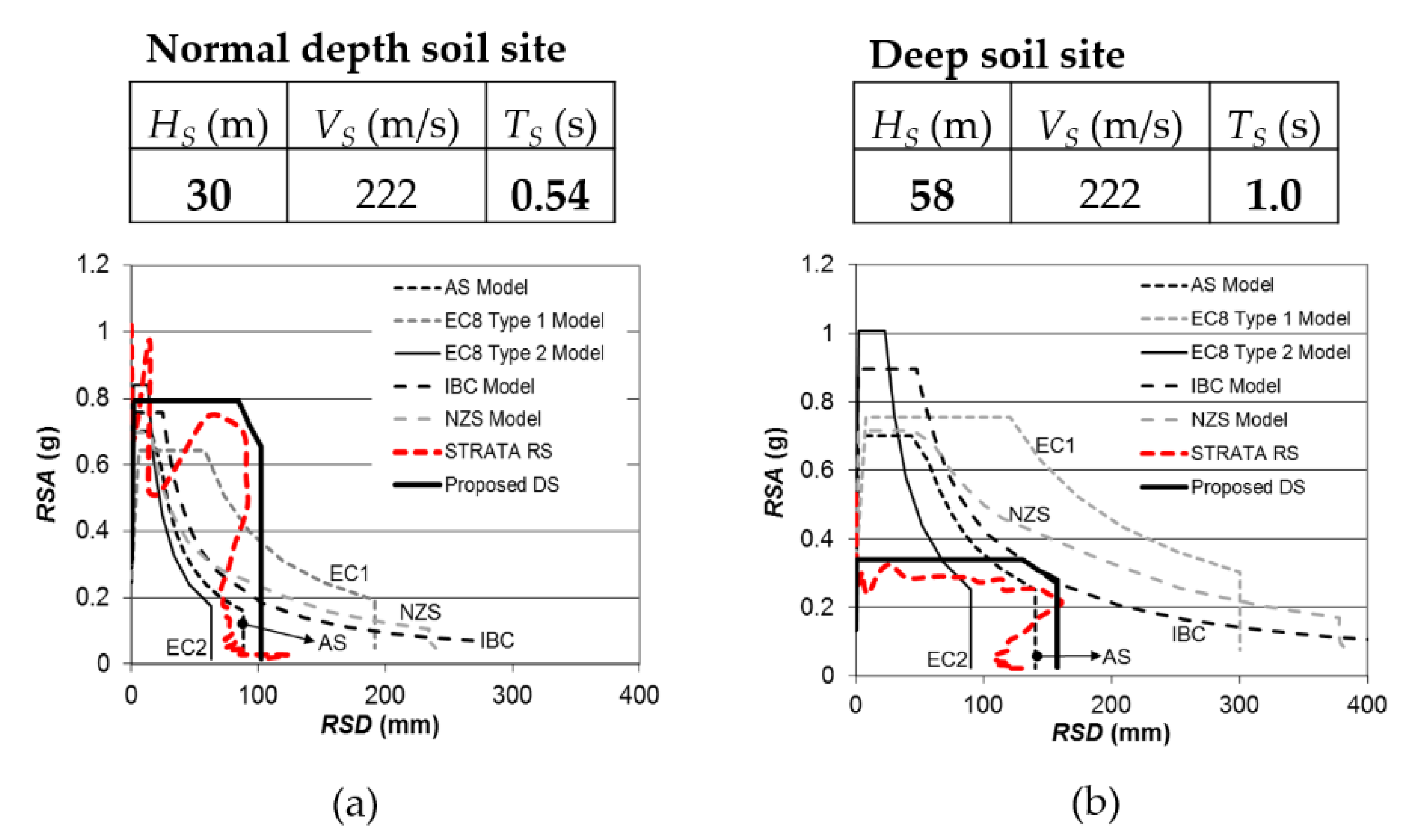
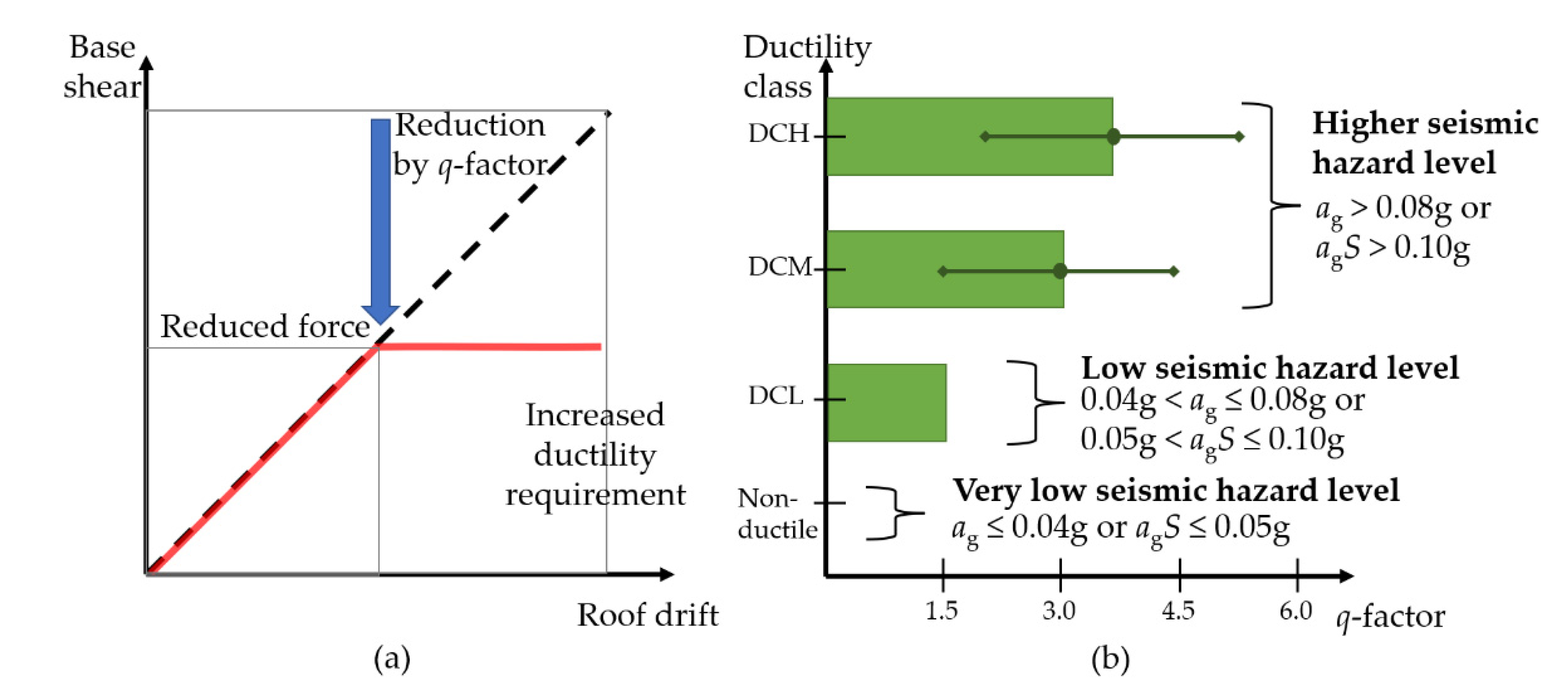
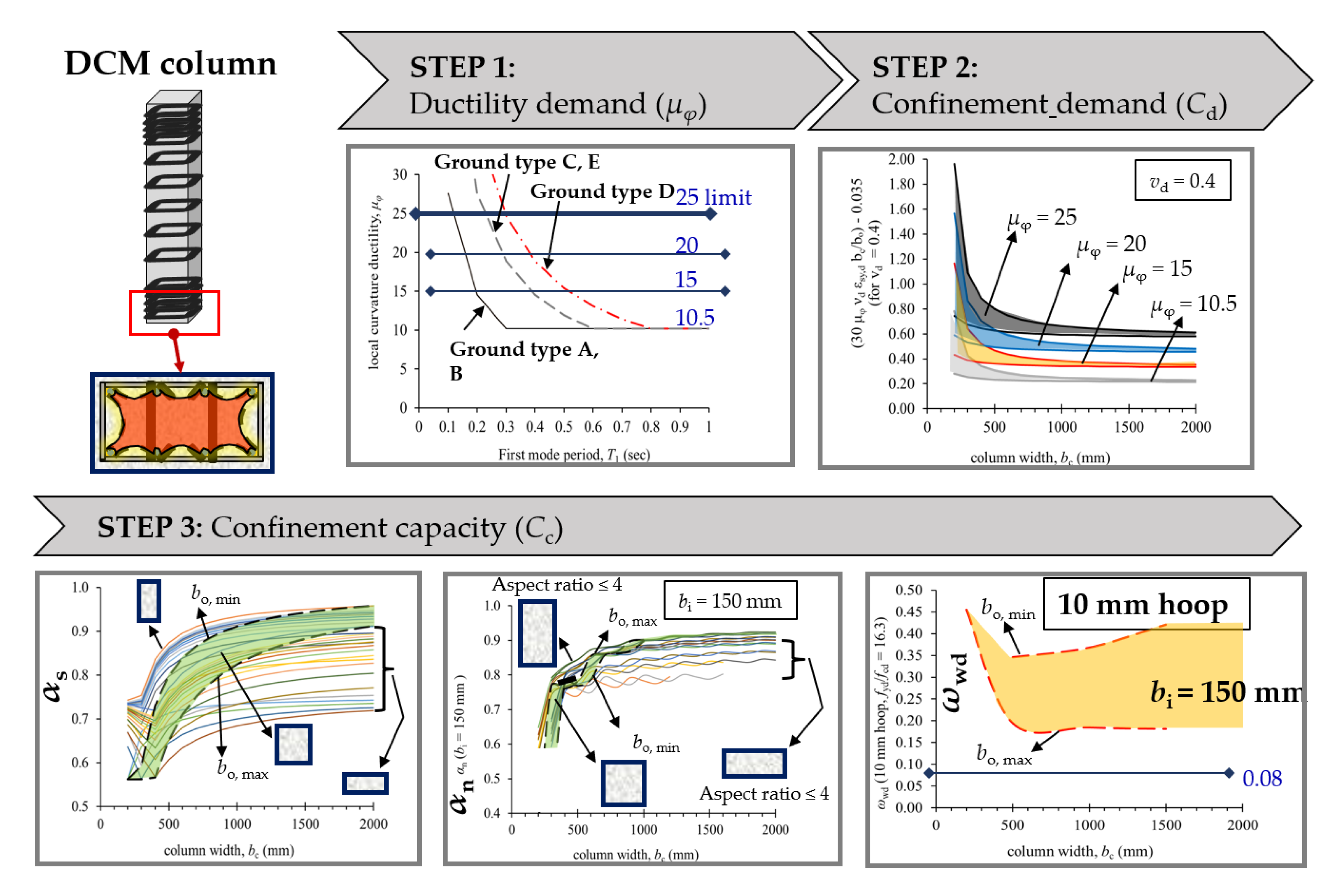
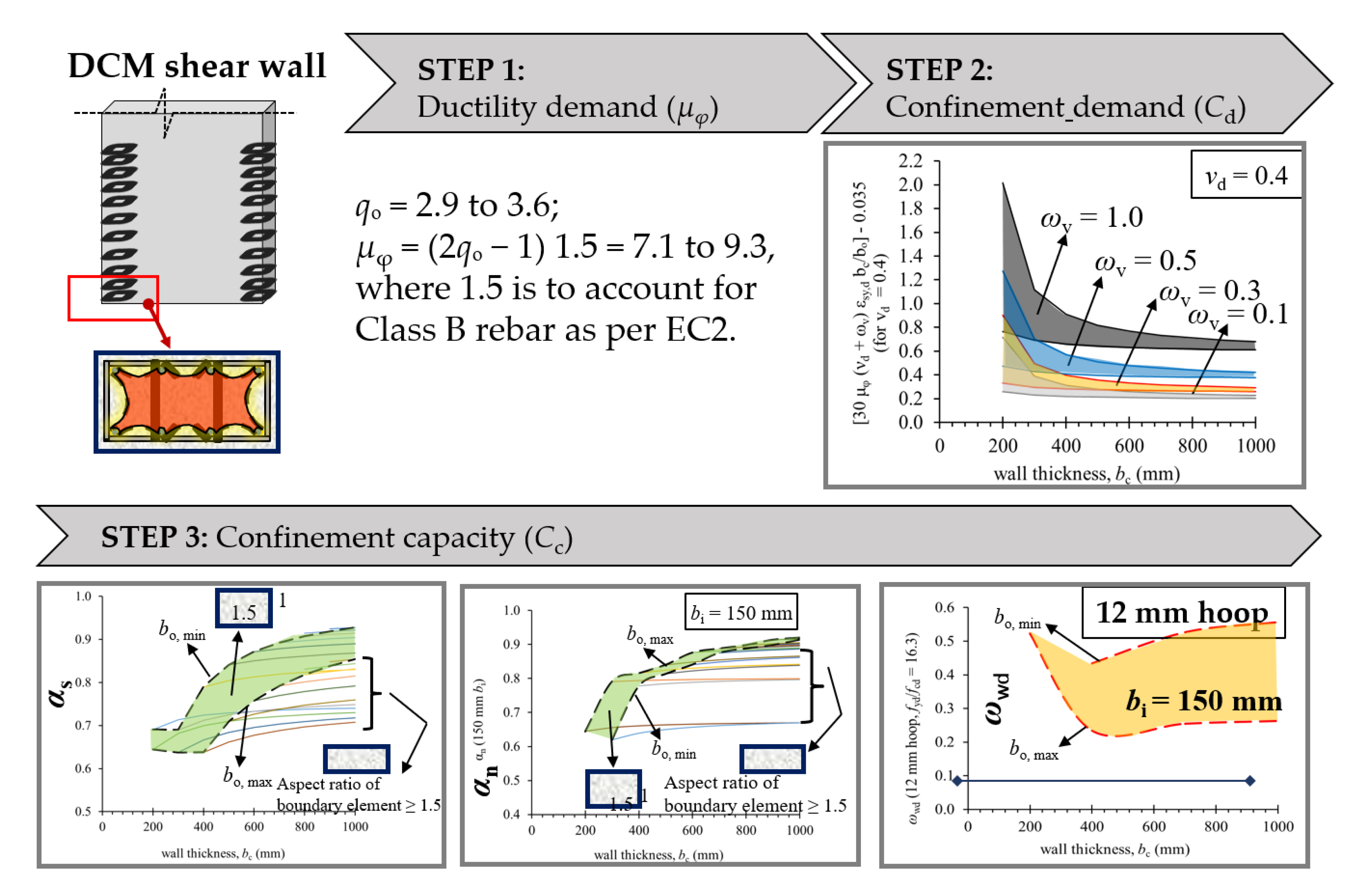
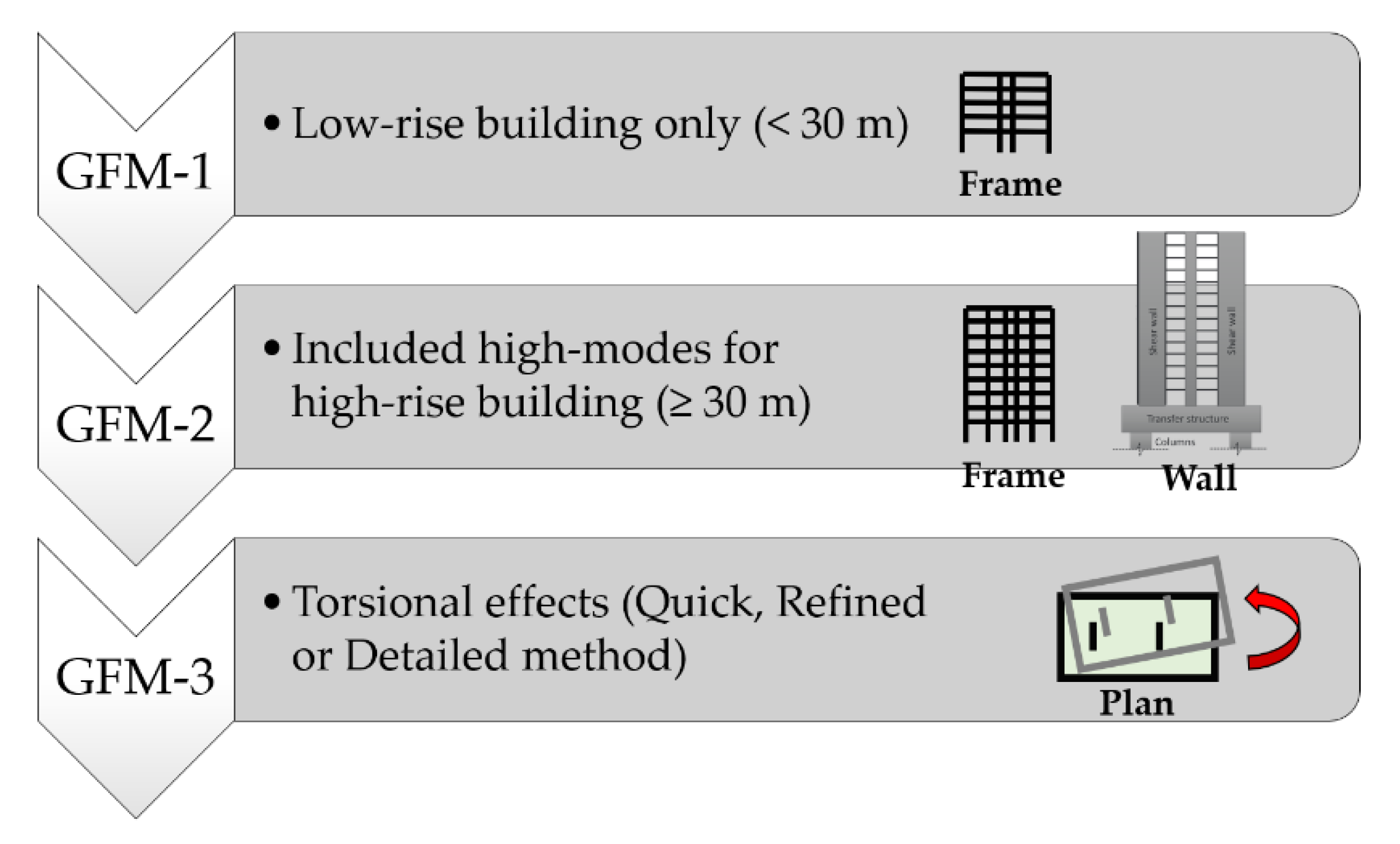
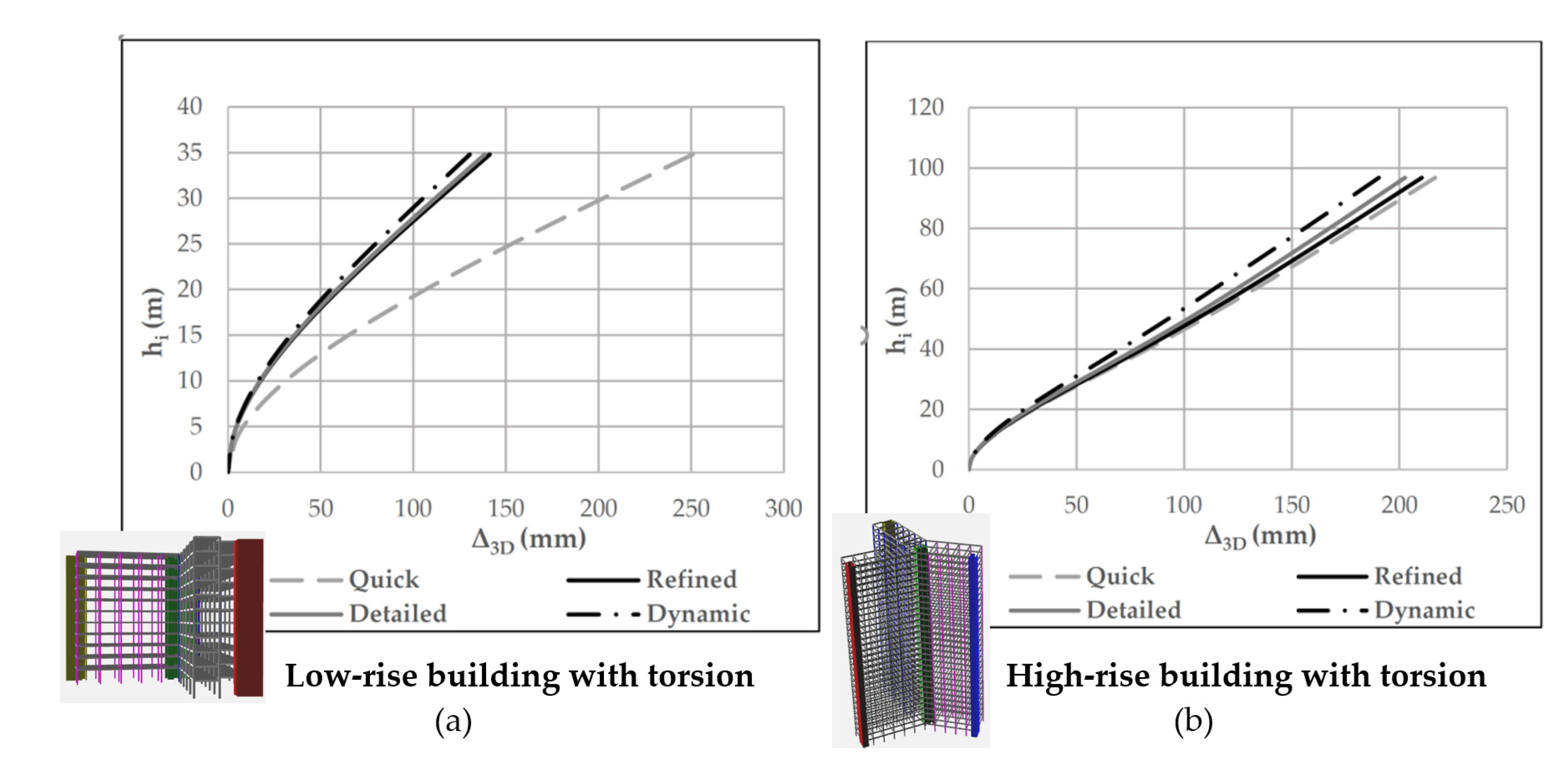
| RC Elements | Parameters | Recommended Values |
|---|---|---|
| Beam | Depth | 600 mm |
| Hoop diameter | 10 mm | |
| Hoop spacing | 150 mm | |
| Longitudinal rebar diameter | 20 mm | |
| Rectangular columns | Size | 500 mm × 500 mm |
| Hoop diameter | 12 mm | |
| Hoop spacing | 150 mm | |
| Longitudinal rebar diameter | 20 mm | |
| Longitudinal rebar spacing | 150 mm | |
| αn | 0.78 | |
| αs | 0.73 | |
| Shear walls | Thickness | 400 mm |
| Boundary length | 600 mm 1 | |
| Hoop diameter | 16 mm (or bundled rebars) | |
| Hoop spacing | 150 mm | |
| Longitudinal rebar diameter | 20 mm | |
| Longitudinal rebar spacing | 150 mm | |
| αn | 0.80 | |
| αs | 0.70 |
Publisher’s Note: MDPI stays neutral with regard to jurisdictional claims in published maps and institutional affiliations. |
© 2021 by the authors. Licensee MDPI, Basel, Switzerland. This article is an open access article distributed under the terms and conditions of the Creative Commons Attribution (CC BY) license (https://creativecommons.org/licenses/by/4.0/).
Share and Cite
Looi, D.T.W.; Lam, N.; Tsang, H.-H. Developing Earthquake-Resistant Structural Design Standard for Malaysia Based on Eurocode 8: Challenges and Recommendations. Standards 2021, 1, 134-153. https://doi.org/10.3390/standards1020012
Looi DTW, Lam N, Tsang H-H. Developing Earthquake-Resistant Structural Design Standard for Malaysia Based on Eurocode 8: Challenges and Recommendations. Standards. 2021; 1(2):134-153. https://doi.org/10.3390/standards1020012
Chicago/Turabian StyleLooi, Daniel T. W., Nelson Lam, and Hing-Ho Tsang. 2021. "Developing Earthquake-Resistant Structural Design Standard for Malaysia Based on Eurocode 8: Challenges and Recommendations" Standards 1, no. 2: 134-153. https://doi.org/10.3390/standards1020012
APA StyleLooi, D. T. W., Lam, N., & Tsang, H.-H. (2021). Developing Earthquake-Resistant Structural Design Standard for Malaysia Based on Eurocode 8: Challenges and Recommendations. Standards, 1(2), 134-153. https://doi.org/10.3390/standards1020012








